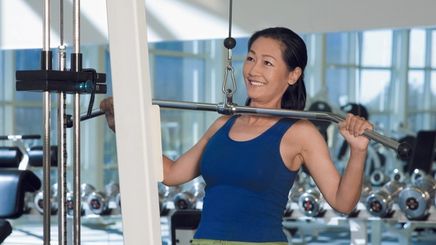
News flash: Strength is in. Gone are the days when women had to conform to a standard of size or strength (or lack of). These days, women do strength exercises and do their own saving. But there’s a consequence to women pulling their weight—gym hands.
Gym hands are neither unattractive nor are they detrimental in any way. They usually happen to people who often work with their hands, subjecting them to constant friction. CrossFitters, weightlifters, gymnasts, boxers, climbers, and even cyclists develop tough skin from the pressure on their palms and/or knuckles. Gym hands are the aftermath of painful blisters, welts, and rips, which happen when blisters tear away from the skin. The skin toughens up and develops its own makeshift shield.
Akin to a thick-skinned person who has been hardened by unfortunate situations and has thus become must more resilient, gym hands are more than calluses or rough patches of skin. They’re a badge of strength and determination.
But, of course, there’s nothing wrong if you want to avoid gym hands altogether. After all, while calluses don’t typically hurt, blisters and raw skin do. You’re also susceptible to skin infection and . and corns can also be uncomfortable. If you’re weightlifting or doing other strength exercises, here are some tips to dealing with gym hands.
Wear Protective Gear When Doing Strengthening Exercises
Use gloves, grips, and performance chalk when working out. However, make sure that these items don’t impede your form when you’re lifting. Glove-wearing in the gym is a controversial issue among fitness enthusiasts. Numerous studies have shown that gloves can alter how you hold the bars, which may tamper with your form and cause injury; however, some experts also believe that they help improve grip. Either way, find out which is more comfortable for you.
If you’re using chalk, make sure to use Magnesium Carbonate and not blackboard chalk, which is Calcium Sulfate. Also known as climber’s chalk, gym chalk is insoluble in water. It absorbs sweat and reduces friction. The chalk your teachers write with, on the other hand, will turn into a slippery paste once it mixes with moisture, like sweat.
Chalk can be messy and drying—which could be counterproductive. Wash your hands well with Dove Nourishing Hand Wash Deeply Nourishing. Lather it onto your wet hands for at least 20 seconds. It has ¼ moisturizing cream that nourishes skin up to 10 layers deep, leaving your hands softer and smoother after every wash.
Try Not to Pick on Your and Calluses
We get you. Who hasn't been tempted to pick and trim away those thick bits of skin? But remember how calluses develop in the first place. To paraphrase the book Clinical Sports Medicine, calluses are how your skin adapts to prolonged wear and tear. Removing hard skin will only make your skin cells believe they need to build an even stronger defense—a.k.a. tougher skin.
Moreover, your constant pulling might tear your skin open, not only causing you unnecessary pain but also making you prone to infections. When this happens, make sure to clean your skin by washing around the wound with antibacterial soap, like Lifebuoy Hand Wash Total 10, which washes away 99.9% of germs. Try to avoid the open area as much as possible as this might worsen any infection.
Can you still lift weights when you have cuts or blisters?
Technically, you can lift weights and do regular exercises even with blisters or rips. You’ll need to bandage your hands properly to decrease the risk of aggravating the wound. However, you can opt for other strength exercises that are light on your hands, such as squats, lunges, or even .
Soak Your Hands Regularly
If you feel your skin thickening, make it a habit to soak your hands in warm water with Epsom salt for 10 to 15 minutes. The warm water softens the callus as salt exfoliates the skin. You can also use a pumice stone to scrub off the hardening surface. How often you can do this depends on how thick your gym hands are. However, if you’re committed to weightlifting or other hand-wearing strength exercises, it might be safer to leave your skin to protect itself.